Family
Camping Made Simple: Camping Hacks
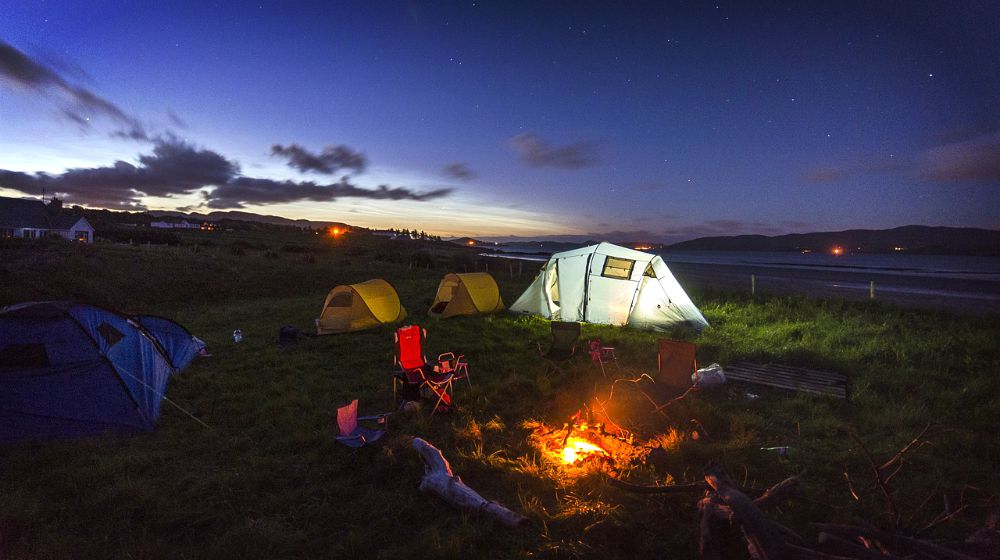
Surviving the family camping trip requires more than food, water, and shelter. In order to return from the wilderness with your sanity intact, not to mention keep whining to a minimum, you need to keep your little zombies comfortable. The best way to do this is to get organized, and getting organized starts with packing the car. Here are some hacks that will inspire you to get creative on your trip!
Camping Made Simple | 5 Hacks to Help You Get Started
1. Bring Only the Essentials
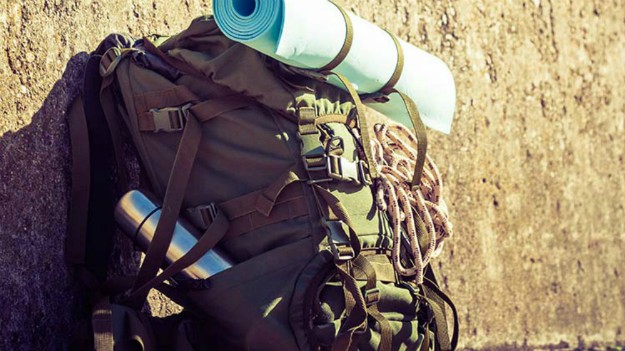
Ever hear the expression, “you can’t take it all with you”? This applies to family camping trips as well. Instinct may tell you to pack for any eventuality, but smart and savvy packing will make the trip run smoother in the end. Basic necessities like clothing and toiletries are fine because you’ll need those. But you should take a good hard look at each item you’re planning on bringing to the camping trip. Is it necessary, and how many functions can it perform? Find items that can do double duty to cut down on clutter. If it only has one purpose, it doesn’t make the cut!
2. Choose DIY Camping Equipment Over Store-bought ones
The first thing you’ll notice after checking out these hacks is you don’t need to purchase as many camping goods as you thought you did. Don’t lug around floating water beds and sleeping pads for the tent, instead use an inflatable air mattress for both. My personal favorite hack is using a hanging shoe organizer to store all non-perishable food and kitchen tools. You can roll it up to save space when you’re not using it, and easily keep track of all those small items. All of a sudden, bringing the salt and pepper shakers from home doesn’t seem unreasonable!
3. Pack Frozen Water Bottles in Your Cooler
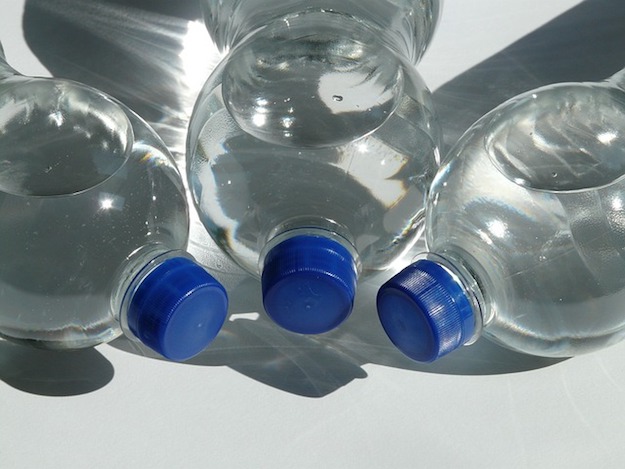
Keeping the family hydrated is the most important aspect of a healthy camping trip. In order to save space, pack bottles of frozen water in your cooler. They’ll be used later as drinking water and it also takes care of keeping your first meal at the campsite fresh.
4. Make a Homemade Fire Starter
For a fire starter, we advise you to use the homemade version crafted from dryer lint and wax and stored in an egg carton. Speaking of campfires, the best type of fires for cooking is the log-cabin style, because it can support cookware. To achieve this type of fire, stack kindling at right angles, overlaying each piece so that it balances on the ones below it. Use the largest pieces on the bottom and the smallest on top. When choosing your location to build the fire, keep in mind nearby objects, but also keep an eye out for low-hanging branches overhead. The Lifestrike fire starter is just a $0.01 and waterproof. Grab it here.
5. Identify Which “Luxury” Camping Gear in Worth Bringing
Once you’ve created some much-needed space by cutting down on needless stuff, you can work in some “luxury” camping goods that will add exponential value to your trip. Water shoes, insect repellant candles and clothing, and a durable hammock will all make your family much more comfortable on your trip.
A sun shelter is the most expensive item on this list, coming in at around $150. Sun shelters actually straddle the line between luxury and necessity, as they’re designed for comfort. But if you’re camping in an especially hot area, they can help your children stay cool during those peak sunny hours. A trek to the river or beach can end up being cut short because of the blazing sun.
If you’re unsure whether or not you’ll need this item, then refer back to our old double-duty idea. Bring a large golf umbrella, that way you’ll have protection from excessive sun or rain!
Check out 10 more camping tricks from Destination Tips in this video.
These tips serve as a good primer for your first family camping trip, but the best way to come up with new ones is to get out there yourself! Getting your children into the wilderness early on in their childhood is crucial if you want them to love camping because taking surly teenagers for the first time isn’t a walk in the park. For more tips, check out Amy Whitley’s guide to camping hacks for families!
What are your go-to hacks when camping? Share them with us in the comments section below.
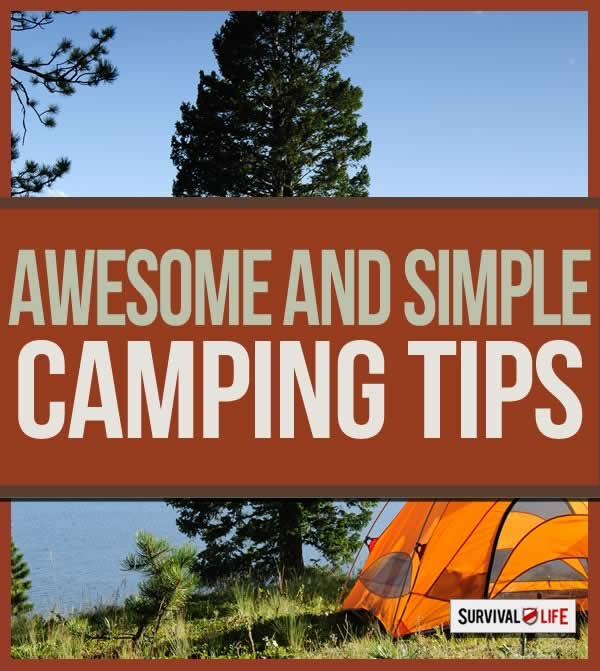
Up Next: 5 Survival Skills You Can Practice While Camping
Did you forget some camping gear? Check out the Survival Life Store for camping gear and survival tools!
Editor’s Note: This post was originally published on December 10, 2014, and has been updated for quality and relevancy.
-

 Do It Yourself7 months ago
Do It Yourself7 months agoParacord Projects | 36 Cool Paracord Ideas For Your Paracord Survival Projects
-

 Do It Yourself9 months ago
Do It Yourself9 months agoHow To Make Paracord Survival Bracelets | DIY Survival Prepping
-

 Do It Yourself9 months ago
Do It Yourself9 months ago21 Home Remedies For Toothache Pain Relief
-

 Do It Yourself10 months ago
Do It Yourself10 months agoSurvival DIY: How To Melt Aluminum Cans For Casting
-

 Exports8 months ago
Exports8 months agoAre Switchblades Legal? Knife Laws By State

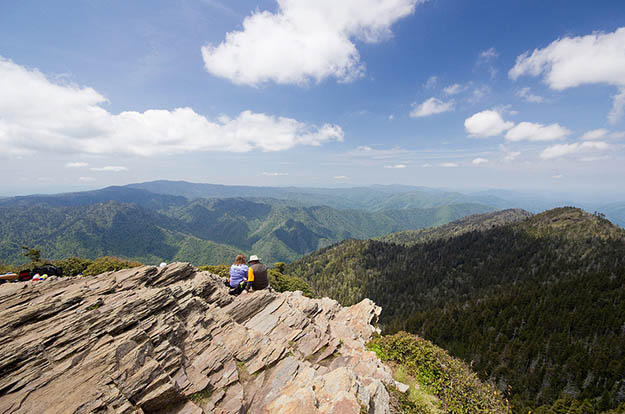

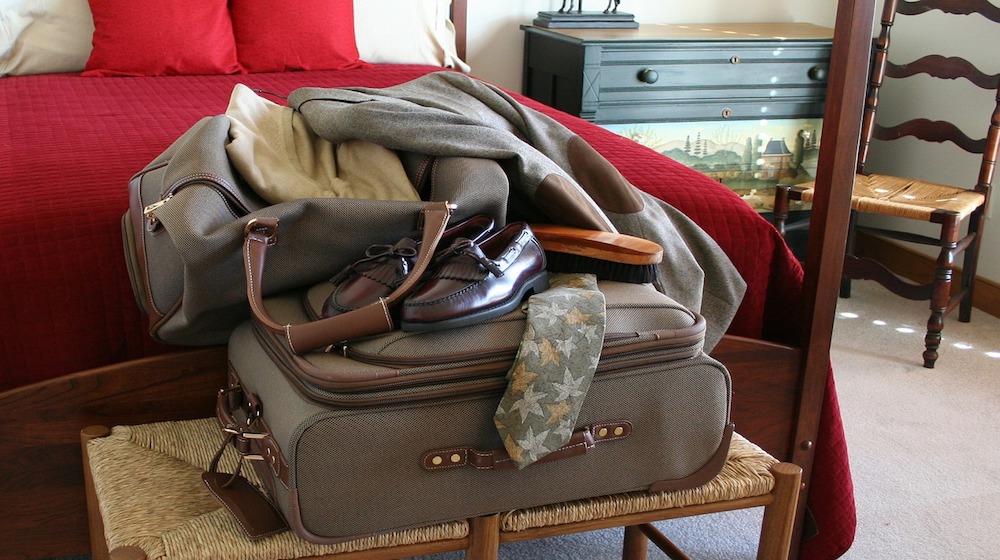

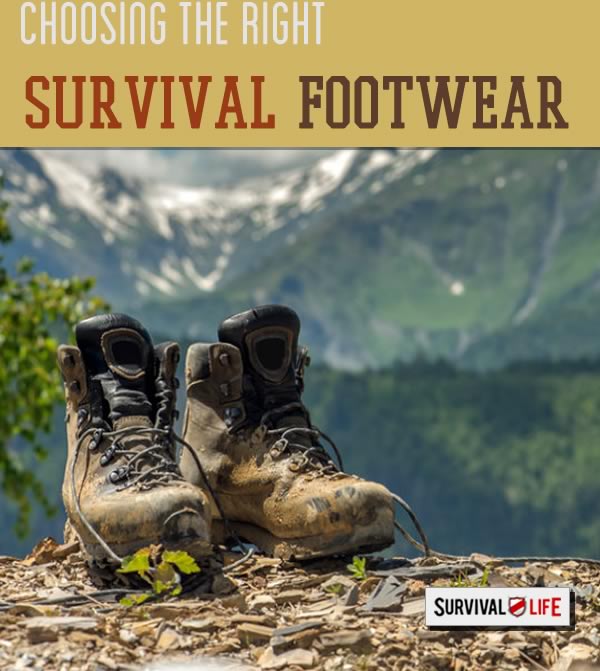
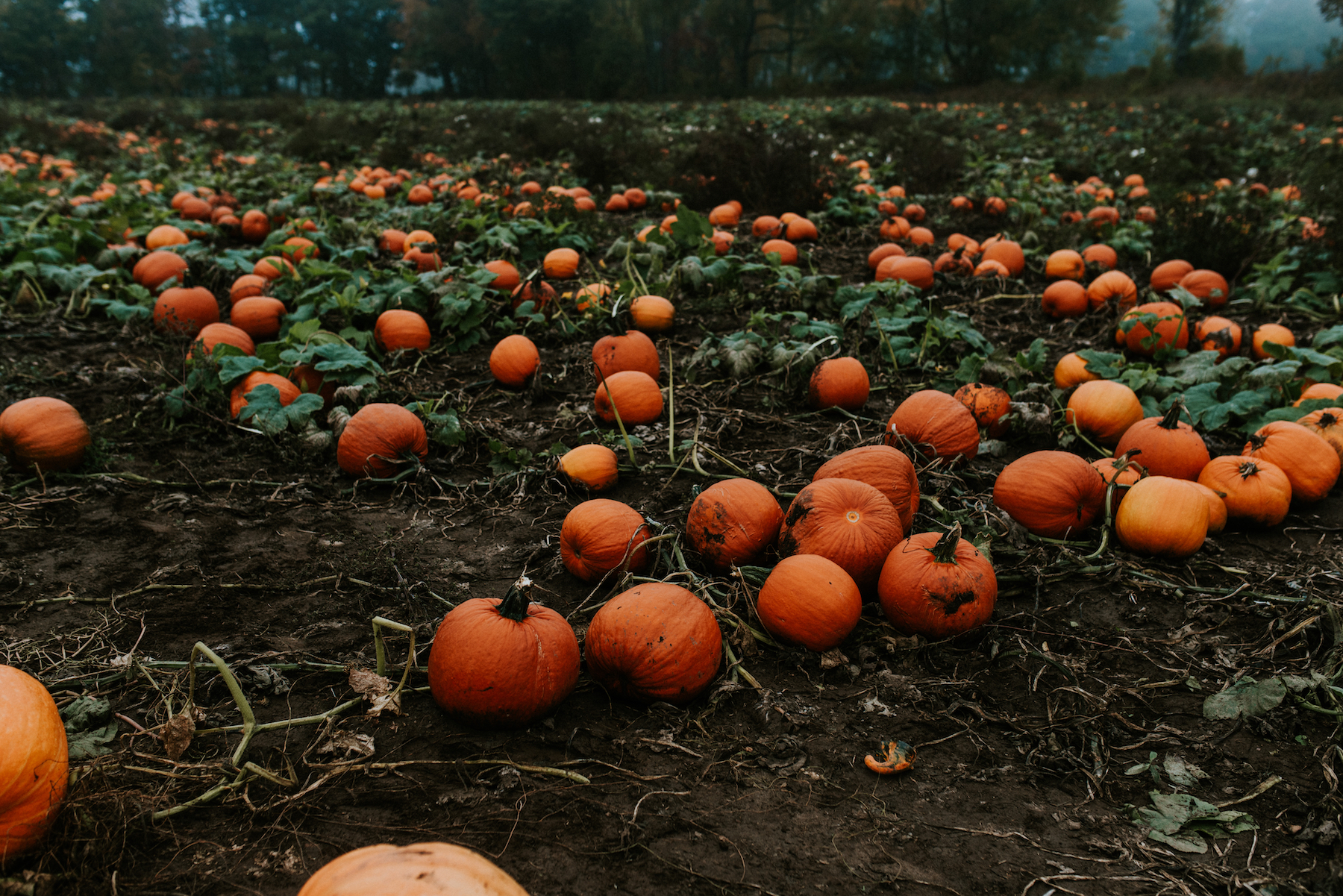

Pingback: Camping Made Simple: Camping Hacks | Survivalist Basics | Be Prepared For Anything!
Pingback: Camping Made Simple: Camping Hacks | Patriot Powered News
SmokeHillFarm
December 11, 2014 at 1:21 AM
Good points, all. My family camped a lot in the 50s — it’s one of the earliest memories I have & it instilled in me a love & respect for nature that has lasted over 60 years. I took my son camping from the time he was about four or five.
One thing I have learned is that it is important to let the child help and participate, not just watch you build fires & put up the tent. Even a small child can carry wood, look for dry tinder & leaves, and help stack the fire properly before it’s lit. Letting him light it (supervised, of course) is the icing on the cake, of course. Some of my warmest memories of my Dad, who died when I was 12, involve camping & the fishing that went along with it. There is no better way for a parent to bond with a child than sharing a camping experience and watching him (or her) grow into a confident, responsible person.
From the initial planning and organizing the packing & equipment, let the child learn by actually doing the work. By the time I joined the Scouts I knew more than most of the local Scout leaders and could show them better ways of doing things.
Elie
December 21, 2014 at 12:54 PM
My Dad did the same with me — camping and fishing — and both of my sisters. Mom always joked that I was my father’s only son, because I really took to it. I took my daughter canoeing when she was 1 month old and on an overnight backpacking trip into the Colorado wilderness when she was four. Due to illness, we weren’t able to go out again until she was six. But when we weren’t far from where we had camped before, she ran ahead and found our campsite. She was SO excited, and I was very proud of her. I am in my 70’s now and still go tent camping and fishing. Before the trip when she was four, I taught her to pack, unpack, and re-pack her little backpack, which included her small Raggedy and Andy (comfort) dolls, along with food, water, parka and bivysack. When she was six, she carried her own full sleeping bag, plus the other necessities to sustain her in case we had to separate. She knew the trail AND knew to stay on it if she needed to go for help. Learning “mother nature’s lessons” from a good teacher at an early age is absolutely the best!
Rockey Smith
March 13, 2018 at 5:20 AM
Like your comments and so true. Making good memories with children and young people can be lasting and very worthwhile. We would make a game out of seeing how fast and efficient a teenager and I could set up the tent. Not just fun but could be life-saving. Complimenting him on a good job did not hurt either.
Getting young people interested in the bush and learning skills to enjoy and survive is an important legacy to leave behind. Don’t just give them a fish, teach them to fish.
Old Soldier
December 17, 2014 at 9:44 AM
SmokeHillFarm SmokeHillFarm has the right idea. If we are to preserve our outdoor heritage, hunting, fishing and camping we must get young people involved and enthusiastic before they acquire other interest. I am 77 and was born in the backwoods where recreation was those things. I left that enviorment young but did the same thing as the first poster. Now my grand children and great grandchildren are for the most part following in my foot prints. It is a very rewarding feeling. h
Ron Burke
December 17, 2014 at 10:05 AM
I always pack a bottle of Activated Charcoal capsules. Should you eat or drink something that may have been contaminated with bacteria, take a couple of the caps, and they will negate the bacterial affects. You may burn wood to make your own, but it is miserable to choke down…it wants to come right back up. Learned the hard way to choke down charcoal I made, in one of the military survival schools I went through.
Stay safe and stay healthy.
Ron
willowa
December 17, 2014 at 10:55 AM
Re: the sun shelter, or, a plastic tarp and cord to tie to trees, $10-$20. the hydration pack, or a water bottle, I much, prefer stainless steel, $12-14.
Dan
March 12, 2018 at 3:13 PM
I am almost always able to find stainless steel bottles at second hand stores for $1 to $5 at the most – I just make sure I let them soak with a strong bleach water mix over night just to make sure they are sterile. But I agree with you – a metal bottle is much better than plastic – other than a little heavier.
Laura Brewer
December 17, 2014 at 12:04 PM
I have done a LOT of camping over the past 20 years and I would like to offer some additional suggestions. Freeze your water in gallon jugs. Two will take 2 – 5 days to thaw, depending on the weather, and you can pack the items that most need the cold in between them. Yes, you can drink it as it thaws 🙂
Prep as much as you can ahead of time. If you plan on using ground beef, say for tacos or spaghetti, precook it. It keeps much better than raw meat and eliminates the dangers of contamination. Cooked ahead or not, all meat should be separated into meal portions and frozen (unless dried). Cook as it thaws.
One absolute must, even if you are just camping for a weekend, is dry food box for non perishables. Want to use the idea of a shoe rack? Fine, but make sure you can quickly roll it up inside something secure and water tight. Let’s face it, weather happens and when you’re camping, you can’t run back in the house to stay dry. I have camped, more than once, with severe weather. It’s not hard if you plan for it, but getting out in the boonies and suddenly finding all your food got soaked over night would not be a fun trip. Plastic tubs are easy to pack, they’ll keep the contents dry and keep your food away from critters.
M. Sue Butler
December 17, 2014 at 12:04 PM
Enjoy your e-mails.
Ruth
December 17, 2014 at 12:29 PM
My husband and I camped on our honeymoon 33 years ago and have been regular campers since then. I did get a few pointers I think are useful – particularly the replacement for a camp kitchen–although one still needs a flat surface (table to put the stove onto–unless you are cooking everything over a fire). The water jug and a head lamp are a cute idea–not sure how that works though–a little light. the air mattress was not a good idea when my husband and I have camped–somehow it is always nearly freezing at night in the mountains at archery shoots no matter what time of year starting at the end of April all the way up to September…We think a thick pad for the ground, comfortable cots and/or 3-4 wool blankets on top of the air mattress to stop the cold.
Kathleen
December 18, 2014 at 7:49 AM
I always pack a pretty complete First Aid Kit when camping with children’s. My other staples are extra contractor grade garbage bags (waterproof storage, tent repair, ponchos – you name it) and a couple of inexpensive shower curtain liners and para cord. If nothing else, the kids can make their own teepee or tent out of them and give the adults some extra room to stretch out, but those shower curtains come in mighty handy during a downpour to keep yourselves or your gear dry.
Ed
December 18, 2014 at 4:24 PM
Good stuff.
As an Eagle Scout from the past I have used several of these ideas and they work well.
Jim Lambert
December 20, 2014 at 8:50 AM
These are all great and needed tips for those of less experience. Then there are things you can do as an advanced camper outdoorsman, thinking outside the box. One that my family has done for years that comes in mighty handy is this. Take a empty coffee container cut a long slot in the side, poke a small hole in the bottom and the lid,put a piece of 550 paracord or just a piece of hemp rope small tie a knot so it can’t pull back through your plastic coffee container after running it through the container,then simply put a roll of toilet paper in pull out a start put it through the cut in the side of your old coffee container put back.on the lid wala. I waterproof container with handle for crying or hanging your toilet paper and it won’t get soggy or wet from rain or dew. There are lots of need projects that can even be fun to do if you just put your minds together and think.back over the last 40 years I have been camping primitive style away from everything and everybody in the middle of the Forrest.
Terri
January 7, 2015 at 11:13 PM
As I prep, I am compiling spiral notebooks by subject of printed articles found from various websites, including yours. Thanks for the great info. However, please provide a way to print these articles as there is no such option at this time. I want a collection of information that is NOT dependent on the internet!
Carol
January 14, 2015 at 9:39 PM
I agree these articles are great but printing is a pain. I highlight the article and paste into Word. I have to adjust the margins but I have a printable article that I can save in hardcopy and digitally.
Paul Smith
March 12, 2018 at 1:24 PM
Use the email function to send it to yourself and then store the emails on your computer in appropriate folders. I download my emails into Outlook but there are other, free email clients you can download such as Thunderbird. Get your survival, medical, camping, bushcraft, navigation, signaling, etc. books from Amazon or other soft book supplier. I can carry 10,000 books on my laptop or tablet. You want to develop or buy one or two solar systems to power it – the folding or roll-up are good for backpacking (remember, two is one and one is none).
Pingback: 39 Hilarious Camping Fails | Survival Life | Blog
Pingback: 25 Badass Camping Hacks For Your Next Trip | Survival Life
Pingback: Camping Made Simple: Camping Hacks
Pingback: Open A Can Without A Can Opener Survival Hack | Survival Life
Pingback: How To Open A Can Without A Can Opener Survival Hack [Video] | Primitive technology
Pingback: How To Open A Can Without A Can Opener Survival Hack [Video] – Ultimate Survival Alerts
Pingback: What To Bring To A Picnic – The Self-Sufficient Life
Pingback: What To Bring To A Picnic | Picnic Essentials Checklist – Sprent Brass
Pingback: What To Bring To A Picnic | Picnic Essentials Checklist – Alive After USA Fall
Pingback: What To Bring To A Picnic | Picnic Essentials Checklist - Cooking in Quarantine
Pingback: What To Bring To A Picnic – surviveurself
Pingback: What To Bring To A Picnic | Picnic Essentials Checklist | Best Go Bag
Pingback: What To Bring To A Picnic | Picnic Essentials Checklist – Bulletproof Survivors